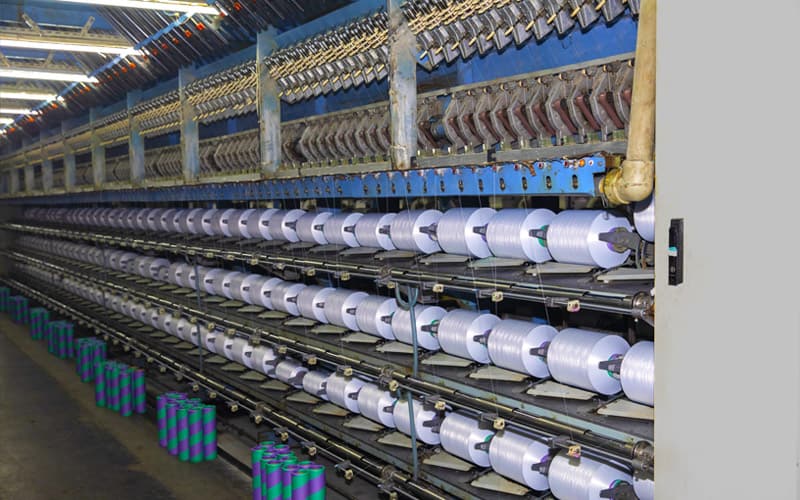As one of the most important application fields of poly […]
As one of the most important application fields of polymer materials, textiles include people's daily life, industry, agriculture, transportation, military, health and many other fields.
More than 90% of textile products have flammable characteristics. According to statistics from relevant departments, my country’s average annual fires will cause more than 500 million yuan of economic losses to the society, and serious fires caused by the burning of flammable textile products account for more than half of the total number of fires. Therefore, Flame retardant treatment of textiles and nonwovens is an important and urgent task.
In 1821, Gay-Lussac used a mixture of ammonium chloride, ammonium phosphate and borax to perform flame retardant finishing on jute and flax, and provided the earliest theoretical basis for the research on flame retardant finishing of textiles. This is similar to the current flame-retardant theory: self-decomposition produces incombustible gas, which dilutes the combustible gas and flame retardant released during the combustion of the fabric to have a lower melting point and form a deposit to cover the surface of the fiber.
In addition to monomers and polymers, the flame retardancy of textiles is generally divided into two types: fiber flame retardant treatment and fabric flame retardant finishing according to the production process and the method of introducing flame retardants.
The flame retardant treatment of fiber is to add a certain flame retardant to some inherently combustible filaments (such as polyester, cotton, acrylic) to inhibit free radicals in the combustion process or change the thermal decomposition process of the fiber to promote dehydration Carbonization; some are to decompose the flame retardant and release incombustible gas to cover the surface of the fiber to isolate the air. The flame-retardant treatment methods include improving the thermal stability of the fiber-forming polymer and the flame-retardant modification of the original filament.
The flame retardant of fabric is different from fiber, usually liquid flame retardant or solid flame retardant is dispersed in liquid to perform overall or surface flame retardant treatment on fabric. It is generally believed that the flame retardant mechanism of fabrics is similar to the flame retardant mechanism of common plastics, including covering theory, incombustible gas theory, endothermic theory and chemical reaction theory (catalytic dehydration theory).

The development of flame retardant technology is closely related to laws and regulations. Timely, feasible, and strict regulations will greatly promote the development of flame retardant technology. Since the 1990s, the China Textile Research Institute has formulated 13 test methods and product standards for testing the combustion properties of textiles, which have been approved and announced by the National Standardization Management Committee. GB 8624-2012 "Classification of Combustion Performance of Building Materials and Products" was implemented on October 1, 2013 and serves as the classification criteria for the combustion performance of building materials in my country
At the same time, GB 8624-2012 also increased the classification of the burning performance of flame retardant fabrics for curtains, curtains and furniture products. The standard divides flame-retardant fabrics into three grades: B1 (flammable materials), B2 (flammable materials), and B3 (flammable materials), which are unified in accordance with GB/T 5455-2014 "Textile Burning Performance Vertical Damage Length, Smoldering and "Determination of Continued Burning Time" and GB/T 5454-1997 "Textile Burning Performance Test Oxygen Index Method" for testing.
For the oxygen index of textile products, it is generally considered that OI≤21% belongs to flammable materials, 22%≤OI<27% belongs to flammable materials, and OI≥27% belongs to flame-retardant materials. These technical indicators are based on long-term use abroad The classification criterion is used to classify the burning difficulty of flame-retardant fabrics. However, based on the test result data in the past two years, the pass rate of products with the nominal grade B2 is about 65%, and the pass rate of products with the nominal grade B1 is about 50%. The failure rate mainly occurs in the oxygen index (OI) test items.
Generally, textile products can hardly reach the B2 level of conventional requirements if they have not undergone flame-retardant treatment. For textile products treated by ordinary impregnation method, the oxygen index can reach more than 26%. For B1 grade textile products that require oxygen index to reach 32% flame-retardant range, it is necessary for manufacturers to use more complicated methods such as padding and baking, impregnation-drying or flame retardant fiber in the flame retardant treatment process of the product. Dealing with this is also a problem faced by many companies.